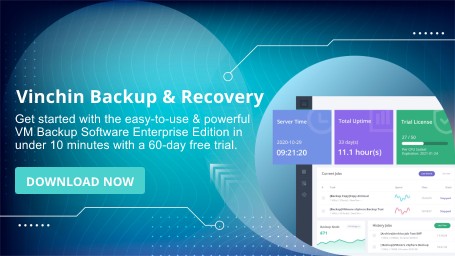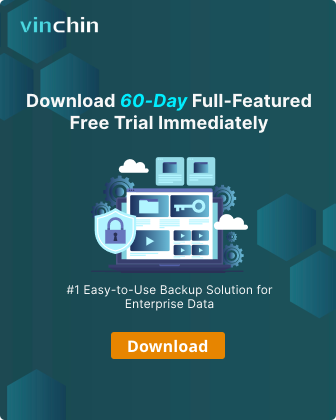-
How to import an OVF file into AWS?
-
How to protect your AWS environment with Vinchin?
-
AWS OVF import FAQs
-
Conclusion
When deploying virtual machines in an AWS environment, it is often necessary to import local OVF/OVA templates into AWS. OVF (Open Virtualization Format) is a standardized virtual machine packaging format that contains the virtual machine's configuration file (.ovf), disk file (.vmdk), manifest file (.mf), and so on.
Because AWS does not support direct import of OVF files, you need to store them in Amazon S3 and then use the VMware Cloud on AWS tool to convert and deploy them. VMware Cloud on AWS is essentially a solution that combines VMware's virtualization technology with AWS's infrastructure, allowing VMware environments to run seamlessly on AWS. Therefore, once virtual machines are deployed on VMware Cloud on AWS, they are considered to be part of the AWS cloud environment.
How to import an OVF file into AWS?
Step 1: Create an S3 Storage Bucket
1. In AWS Console > Go to S3
2. Create an S3 storage bucket:
Click Create bucket
Bucket name: Enter a unique name, lowercase letters only.
Set some permissions and other properties
Click Create bucket to complete the creation.
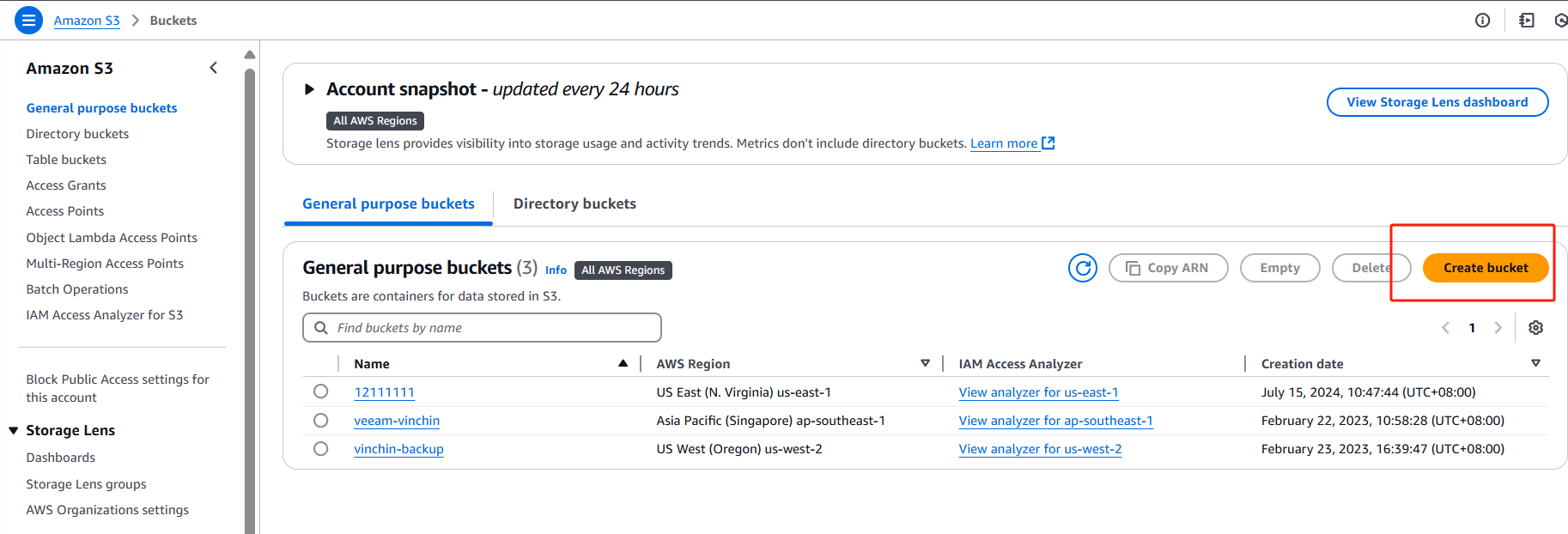
Step 2: Upload OVF and Related Files
1. Go to the S3 bucket you just created
2. Click Upload > Add files

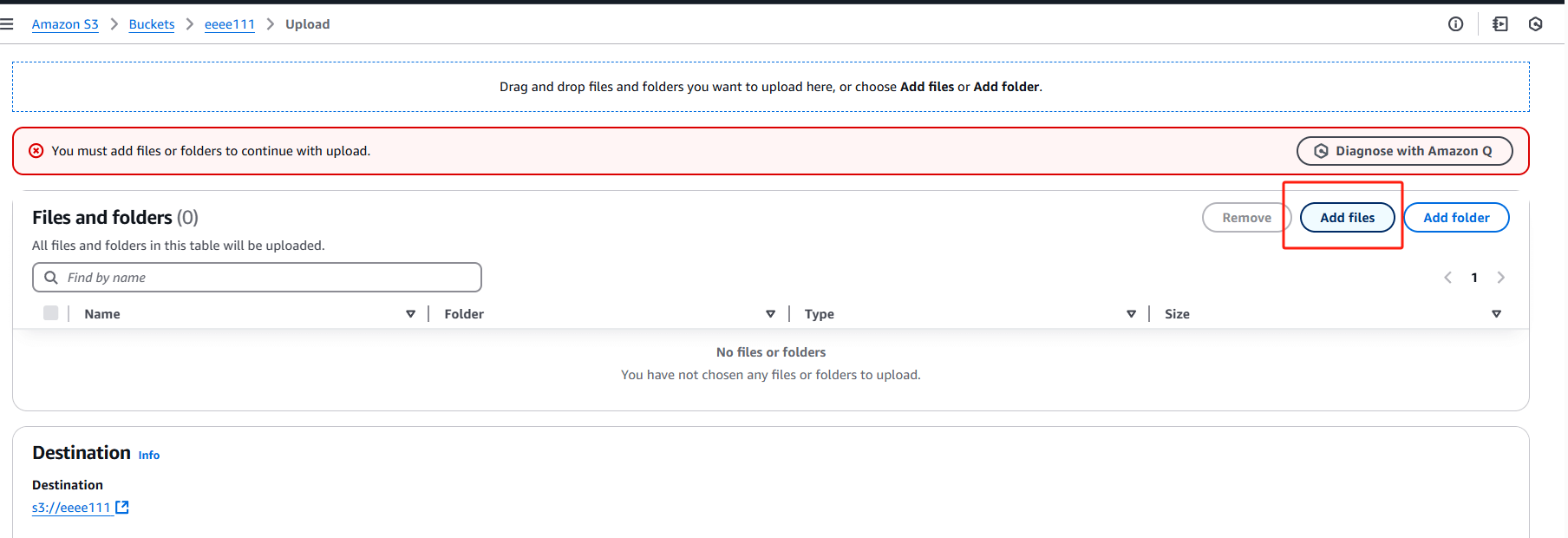
Locally select the OVF file and its associated files (.ovf, .vmdk, .iso, .mf) and upload them together to the S3 storage bucket. Once the upload is complete, make sure the files are publicly accessible.

Click Upload
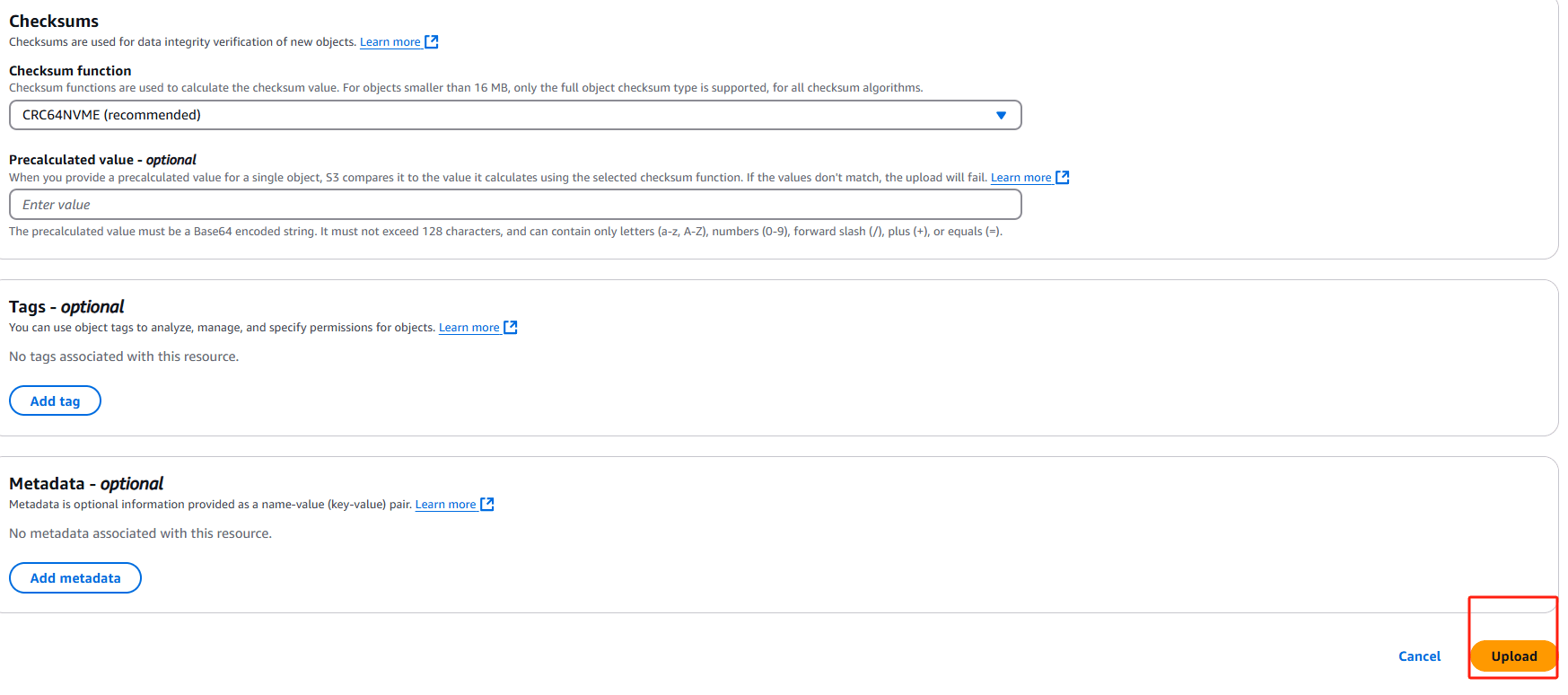
Click on the uploaded OVF file > Copy its Object URL
https://eeee111.s3.us-east-1.amazonaws.com/8989.ovf
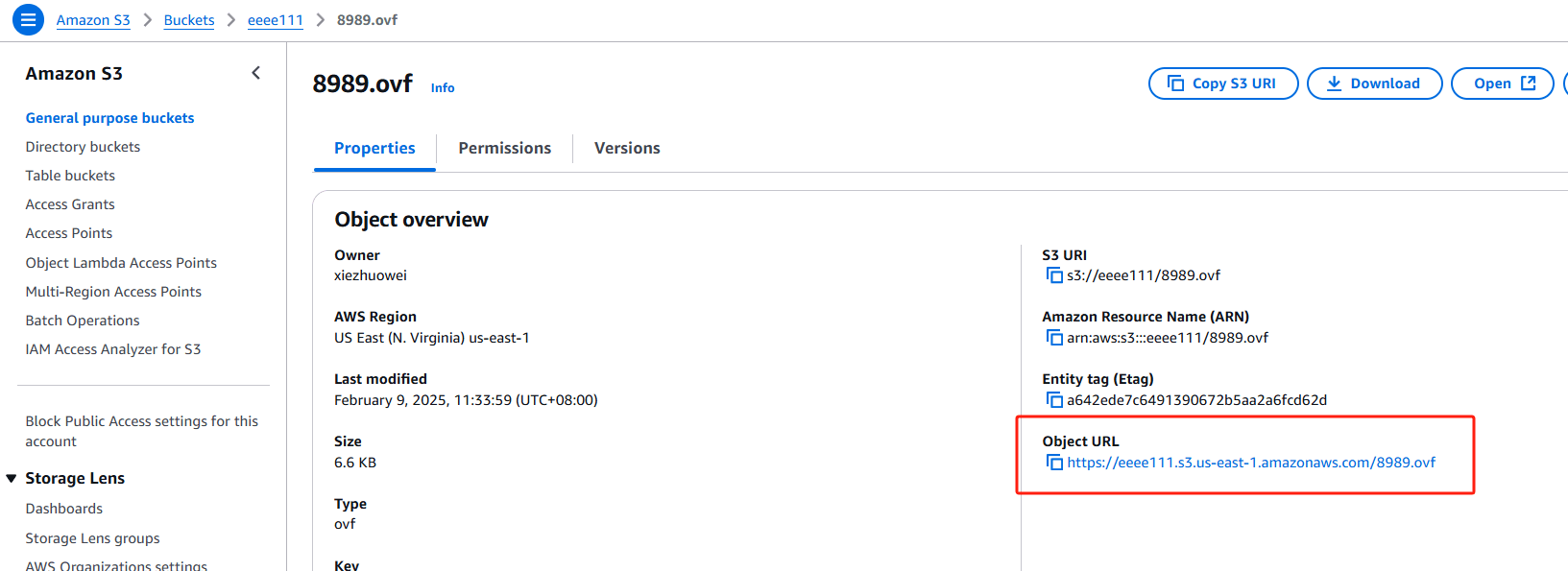
Step 3: Deploy OVF in VMware Cloud on AWS
1. In vCenter, click the resource pool where you want to deploy the OVF > Deploy OVF Template
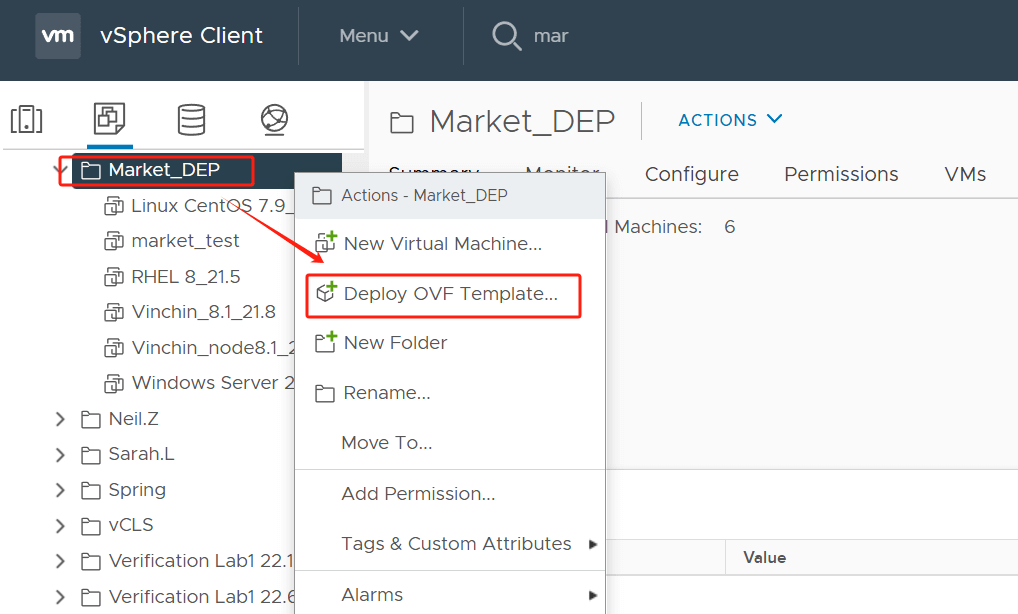
2. In Select an OVF template, Paste the copied URL in > click Next
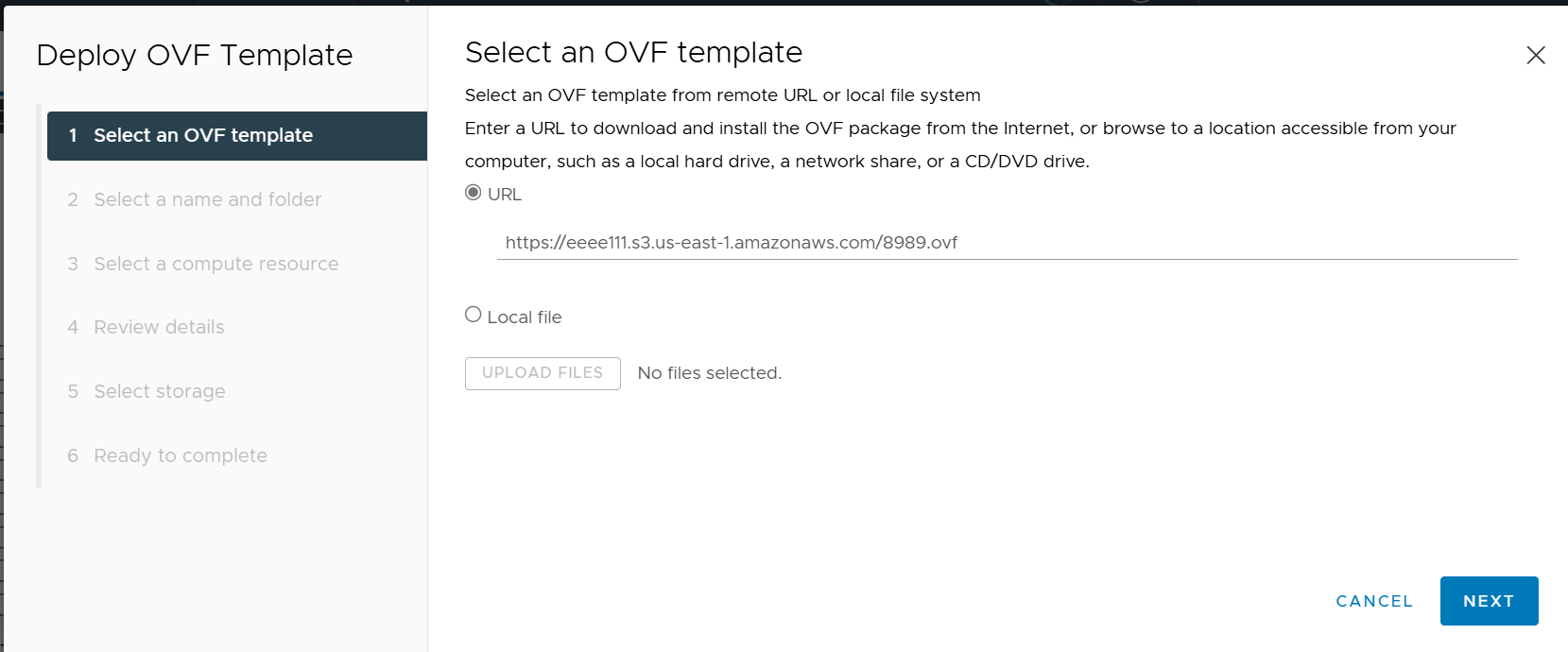
In Source Verification, hit Yes
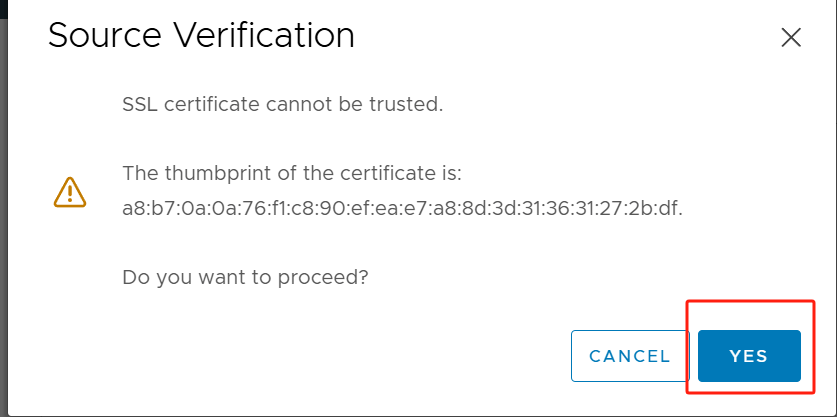
3. Next, complete the OVF deployment:
Select a name and folder > Select a compute resource > Review details > Select storage > Ready to complete
4. Wait for vCenter to complete OVF deployment. After success, start the virtual machine directly
How to protect your AWS environment with Vinchin?
With the above steps, you can successfully import your OVF files into AWS. However, in cloud environments, it is critical to safeguard the continuous availability of your virtual machines and the security of your data. To ensure effective protection of VMs and data in AWS environments, Vinchin Backup & Recovery provides an efficient and reliable backup solution. Vinchin Backup & Recovery is a backup tool designed for VMware, Proxmox, Hyper-V, XenServer, XCP-ng, oVirt, RHV, etc., as well as for EC2 instances and S3 storage.
Vinchin Backup & Recovery provides comprehensive backup and recovery capabilities that simplify virtual machine data protection. It supports agentless backups, incremental backups, instant recovery, and other highly effective features to ensure that virtual machines and data can be recovered quickly in the event of a failure.
Vinchin Backup & Recovery's operation is very simple, below are the steps to back up S3:.
1.Select the backup source object storage
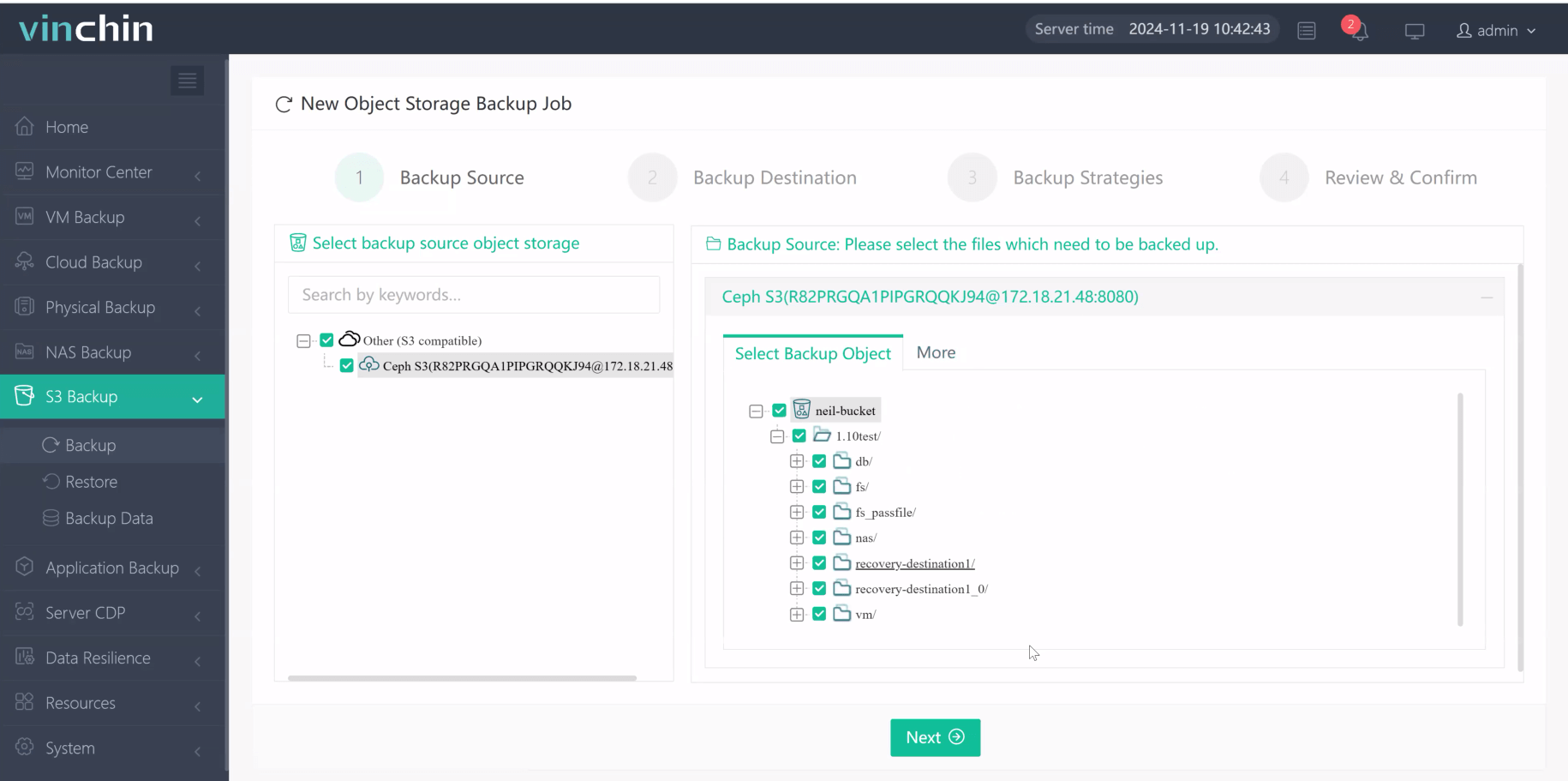
2.Then select backup destination
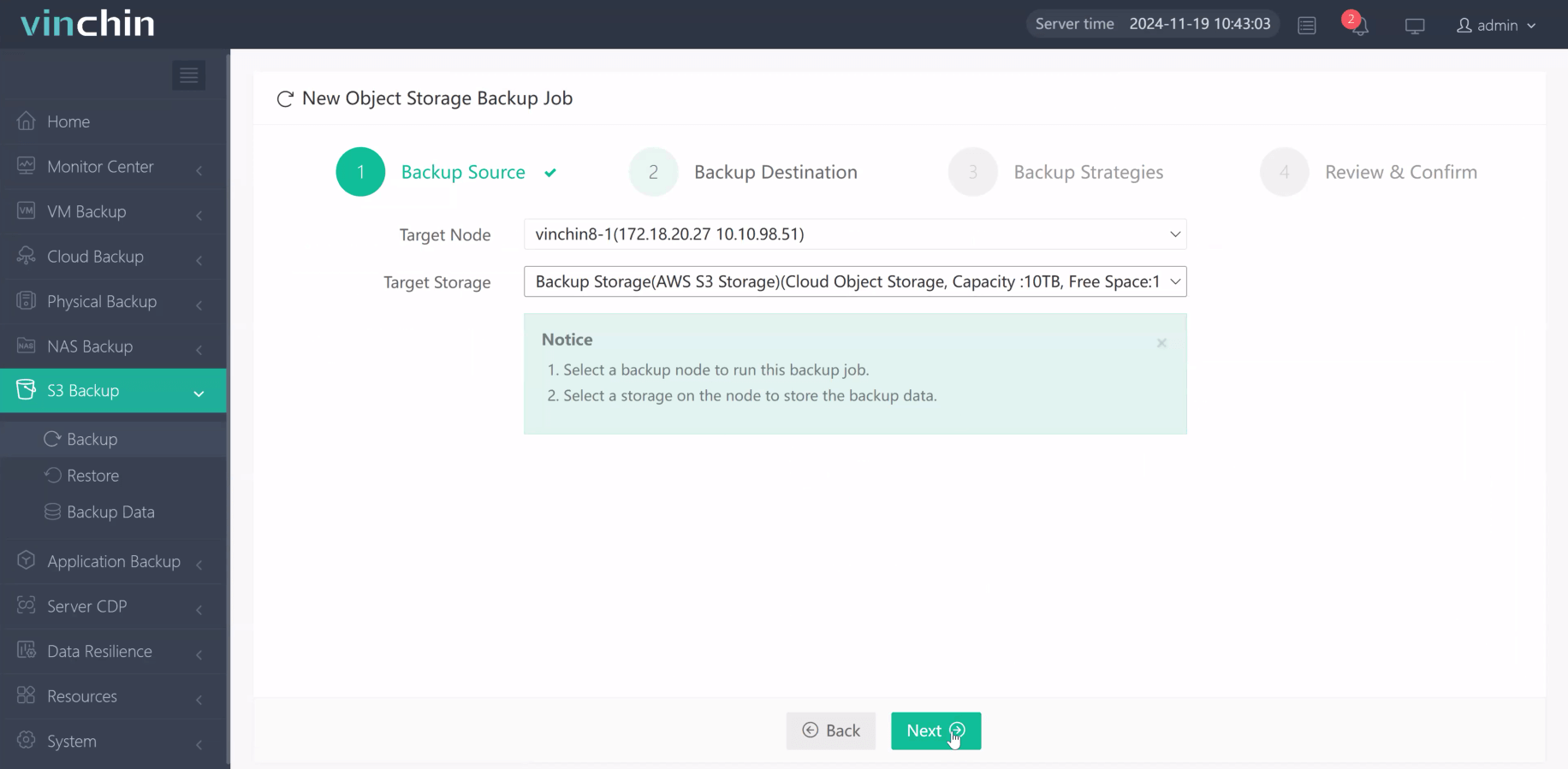
3.Select strategies
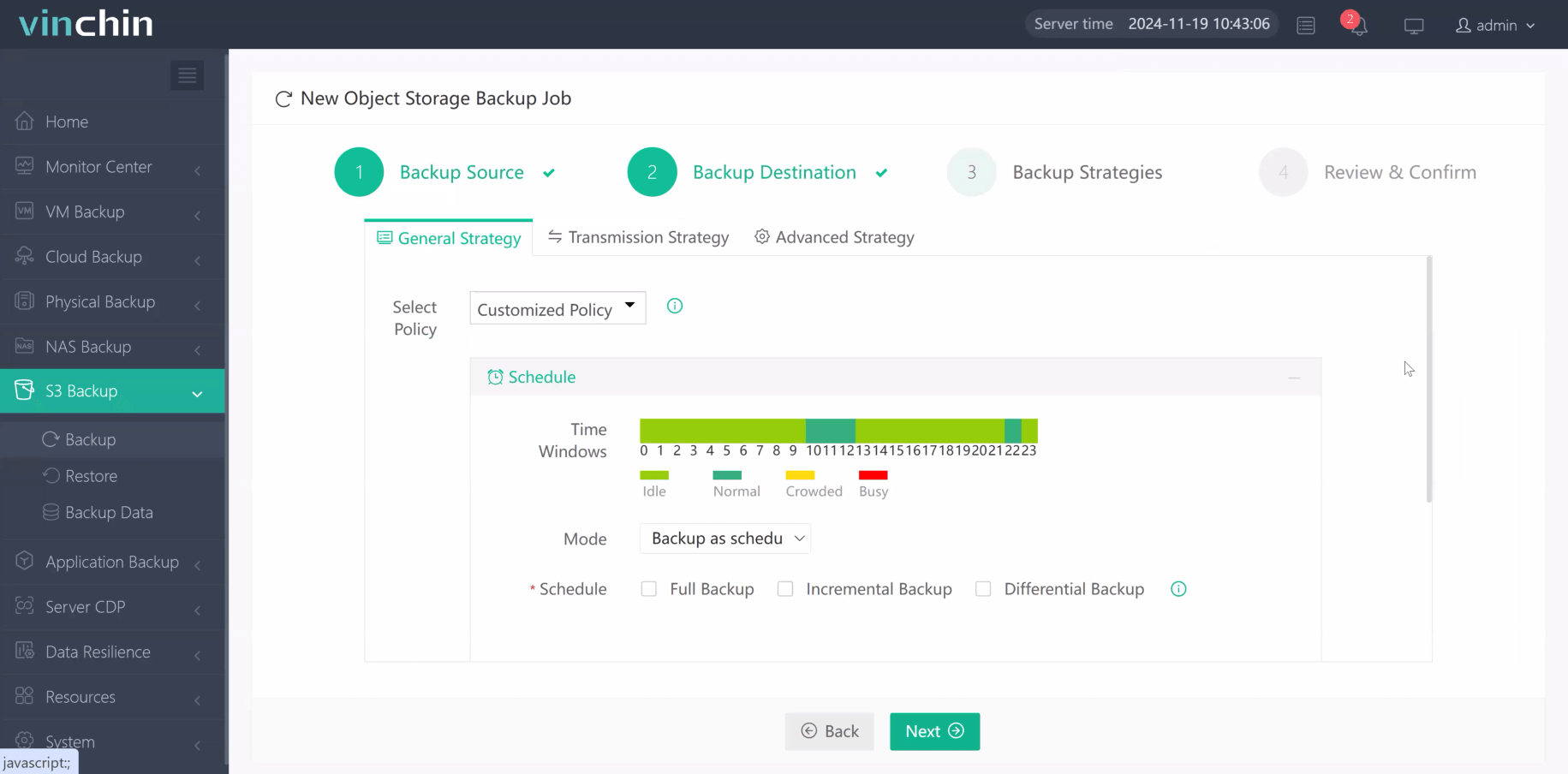
4.Finally submit the job
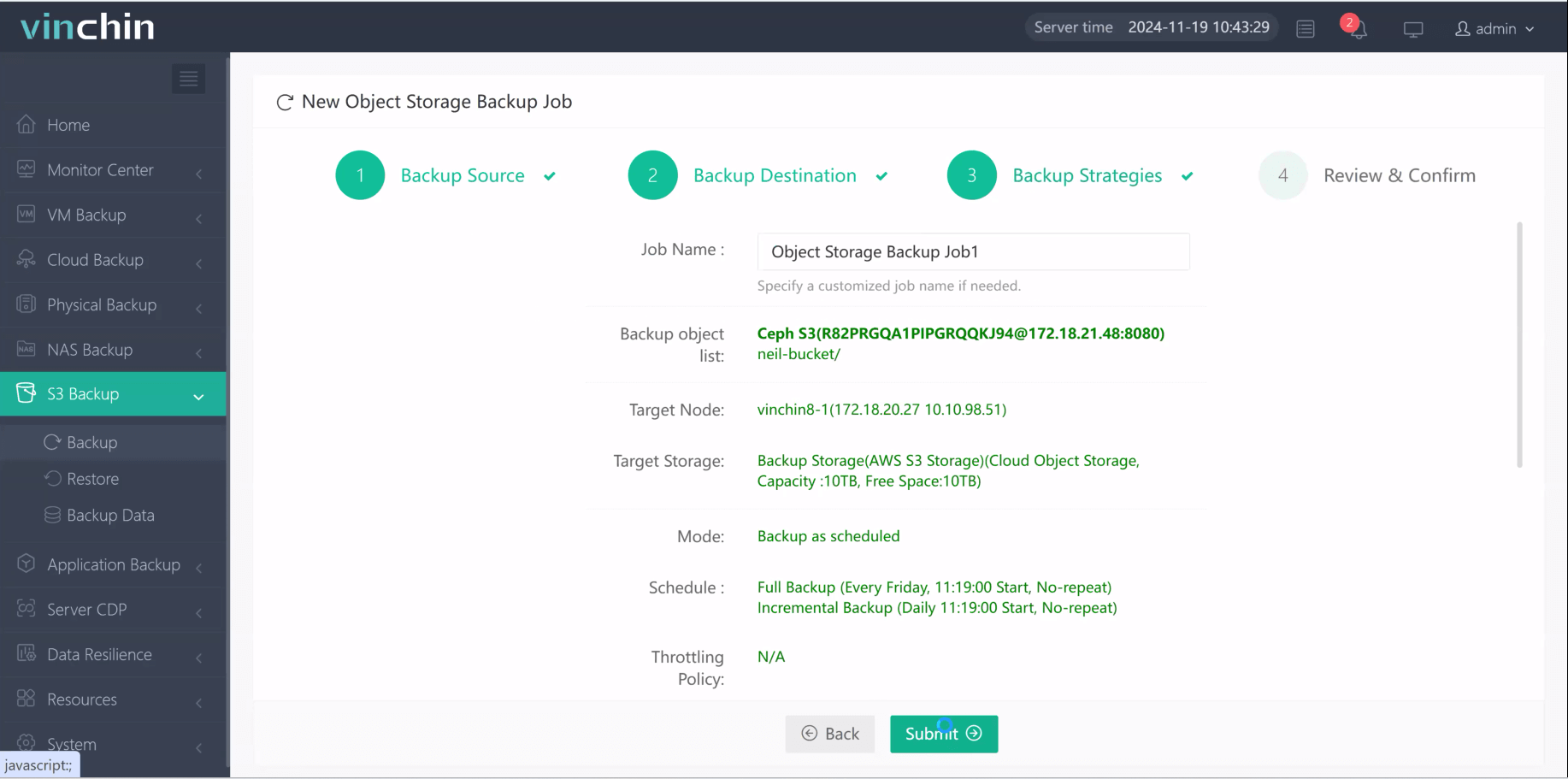
Vinchin offers a free 60-day trial for users to experience the functionality in a real-world environment. For more information, please contact Vinchin directly.
AWS OVF import FAQs
Q1: How long does the import process take?
A1: The import time can vary based on the size of the OVF file and the VM's configuration. Generally, it can take anywhere from several minutes to a few hours.
Q2: What troubleshooting steps can I take if the import fails?
A2: Ensure your IAM role has the correct permissions.
Check the compatibility of the OVF file with AWS VM Import/Export.
Verify that the OVF and VMDK/VHD files are correctly uploaded to the S3 bucket.
Review the logs for specific error messages and consult AWS documentation for more detailed troubleshooting.
Conclusion
In conclusion, importing an OVF file to AWS involves uploading it to S3 and using VMware Cloud on AWS for deployment. To ensure virtual machine protection and data security, Vinchin Backup & Recovery offers a reliable solution with agentless backups, incremental backups, and instant recovery.
Share on:


